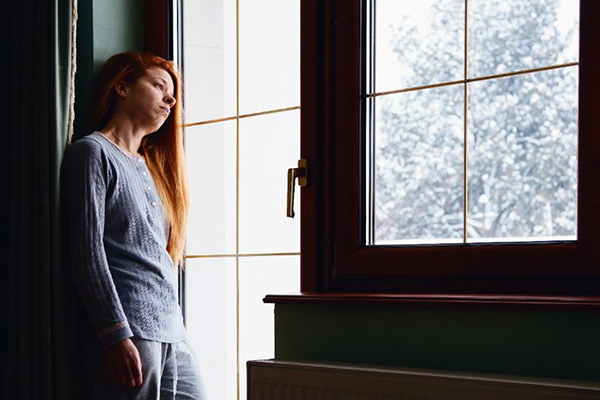self-expression
Seeing Colors In Music
 When my dad became terminally ill in 2013, I turned to art and started painting. I had no ambition to become an artist; it was simply something I could do to take my mind off the stress of my father’s illness.
When my dad became terminally ill in 2013, I turned to art and started painting. I had no ambition to become an artist; it was simply something I could do to take my mind off the stress of my father’s illness.
I started off blending and playing with colors, and eventually branched out to paint pictures that I soon discovered many people found appealing. When I became better at it, I started to incorporate music into what I was painting.
I would pick a song and play it on repeat to inspire me, until I was done with the painting. It was as if I was channeling the lyrics and melodies into the artwork. The music told the story of the art I was creating. I would then name the painting after that particular song and include the lyrics on the back of the canvas.
I also developed a new fascination with music and singing at that time. In time I began putting my art projects to one side, and instead began to focus on learning to sing. I continued the singing after my father passed away, and I found so much personal healing in it.
I didn’t realize how alive music really is and how intertwined my art would become with my singing. When I sing, I ‘see’ the lyrics as if they are being painted on a blank canvas in my mind’s eye. The main verses of the songs will often become large flowers, and the chorus and melodies will fill in the areas around the flowers with leaves and scrolled vines.
I learned recently that there is a scientific term for seeing colors and patterns when hearing music. It is a type of synesthesia known as chromaesthesia. Synesthesia is a perception phenomenon in which one experiences things through your senses in an unusual way. For example, a synesthete might experience a sound as a color, a word as a shape, or a number as a taste or smell. The person’s sensory perceptions are somehow combined or unified, almost like ‘wires that are crossed.’
Honor Your True Self Without The Drama
 Many of people spend a good portion of their lives trying to be who they think others expect them to be. Although it is important for our own safety and peace of mind to conform and abide by society’s customs and codes of conduct, it is also imperative that we feel free to authentically express ourselves – as long as it is not detrimental to the well-being of others.
Many of people spend a good portion of their lives trying to be who they think others expect them to be. Although it is important for our own safety and peace of mind to conform and abide by society’s customs and codes of conduct, it is also imperative that we feel free to authentically express ourselves – as long as it is not detrimental to the well-being of others.
These days it can be treacherous to speak your mind or express your true feelings in just about any context, but the most troublesome of places to do this is on social media platforms, where faceless strangers often attack each other mercilessly, and at times for no apparent reason.
Instead of exposing oneself publicly to the vitriol and ill-conceived opinions of random strangers, it is best to be true to ourselves within our personal circle of influence. Being yourself and living and authentic life does not require us to announce our true thoughts and innermost feelings to the entire world.
Of course, expressing your truth to those closest to us can be equally difficult. One key to successfully communicating is to truly listen with respect and consideration to the views of others. Often, we do not really hear what is being said, because we are frantically thinking of our own response to what we assume they are saying.
Actively listening to someone explaining their position can be a real test of patience sometimes, but it usually pays off in the end by way of mutual understanding, conflict resolution, or compromise.
Disagreeing without hostility and aggression is an art in itself. The world we currently live in can be a tinder box at times, with people overreacting to even the smallest perceived slight. We cannot control the beliefs, words and actions of others, but we can certainly manage our own.
True Healing Begins With Holding Space
 A work associate and friend recently offered me a free healing session, which he describes as ‘holding space.’ It involves the healer simply ‘being present’ and mindful in the moment with the client during a video call.
A work associate and friend recently offered me a free healing session, which he describes as ‘holding space.’ It involves the healer simply ‘being present’ and mindful in the moment with the client during a video call.
He explained the process beforehand and informed me that was going to simply talk and express myself, with no prompting from him. I gratefully accepted his kind offer.
I was not sure what to expect, but having studied various healing modalities myself over the years and being naturally curious about all aspects of spirituality and holistic health, I was open to the experience.
To begin he invited me to just relax and focus on my breathing. Once he senses that I was ready to proceed, he encouraged me to simply begin talking about whatever came to mind.
“Oh no,” I secretly thought, “what on earth will I talk about?”
Well, I soon discovered that it wasn’t difficult at all! I spontaneously began talking, and soon it was pretty much non-stop! I kicked off talking about my concerns for my aging pets, and then went on to other everyday worries and domestic matters. Eventually, I switched to my family history – specifically focusing on all the times I had felt invisible or let down by relatives.
About halfway through, I briefly hesitated and asked my friend if he was not maybe getting bored? But he assured me that he was perfectly fine, adding that this kind of work was very much a calling for him. He later explained that he has overcome several life challenges and tragedies himself over the years, and subsequent soul-searching, as well as further training in various holistic practices, ultimately led him to begin holding space for others.
The Magic Of Living Your Truth
 Where does magic come from? And, if we’re magical, can we lose our magic? We’re all born magical creatures. We also have integrity right from the moment we take our first breath. You may ask, what does integrity have to do with magic? Well, everything!
Where does magic come from? And, if we’re magical, can we lose our magic? We’re all born magical creatures. We also have integrity right from the moment we take our first breath. You may ask, what does integrity have to do with magic? Well, everything!
However, immediately upon emerging from the birth canal, mainstream society starts imprinting upon us its cultural view points, customs and traditions. Often, they become a kind of law that has been adopted over many generations, even entire epochs in our evolution as human beings, and due to ‘group think‘ we are discouraged from questioning their origin, much less their validity.
Group think happens when the desire for harmony or conformity dominates, leading to irrational and dysfunctional choices, decisions and behaviours simply for the sake of comforming.
An example that comes to mind is the statement that we have probably all used at one time or another: “Oh, I’ll just follow the rule of thumb.” However, we would never make such a statement if we were aware of its origins: this was what men used to say when they were using a stick to punish their wife! By law, the instrument for abuse could only be as big around as the husband’s thumb.
Another senseless tradition that comes to mind is why men wear neck ties. Before the advent of computers enabled us to Google our curiosities, I often thought about how glad I am to be a woman, if for no other reason than I don’t have to wear a necktie. Now, I have to admit that I’m “over the top” regarding many time-tested, and supposedly true forms of bondage. I don’t even like to wear shoes that make my feet feel closed in, so imagine my feelings about effectively placing a noose around my neck. Ay, ay, no way!
The Deeper Meaning Of Color Stereotypes
 Have you ever heard the expression someone “talks a blue streak?” It refers to a person who talks rapidly and non-stop. But why use the adjective blue? I suspect it may originate from the metaphysical tradition of the color blue being associated with speaking one’s truth (throat chakra) and creative expression. People who gravitate towards this color are often creatives or performers, such as designers, fine artists, singers, dancers, and so on.
Have you ever heard the expression someone “talks a blue streak?” It refers to a person who talks rapidly and non-stop. But why use the adjective blue? I suspect it may originate from the metaphysical tradition of the color blue being associated with speaking one’s truth (throat chakra) and creative expression. People who gravitate towards this color are often creatives or performers, such as designers, fine artists, singers, dancers, and so on.
Communicating succinctly is the most powerful way we can make a connection with others beyond our subliminal energy connections with everyone around us. An over-abundance of words, however, translates into a lack of trust on the speaker’s part that she is not accepted by others, be it family members, coworkers, friends, or stranger she encounters along her life path. Speaking clearly and concisely is an art.
The color red also holds a fascination for me, as I perceive it to be a color that is so amazingly misunderstood. Red is generally interpreted as the color of anger, such as “I was so mad, I was seeing red.” Red is also used to denote danger in road signs and red cars are said to be associated with speed and aggressive driving.
But the color red also has many positive symbolic meanings in different cultures, including about passion, excitement, love, vigor, health, life and even spiritual zeal.
Another brilliant color that is often misrepresented is black. Once again, it is generally seen as a color related to depression, sadness, gloom, negativity and evil. In my view black stands out as a harmonious hue. If we see it in a positive light, black can be considered as a sharply defined, elegant color. It is symbolic of power, mystery, and sophistication. No one can deny the glamour of showing up to a dinner party in a smart little black dress or a tailored black tuxedo.
Letting Go Heals Our Silent Pain
 Too often we are not aware of the emotional pain in others. We are blissfully ignorant of the invisible pain that they are suffering. This is the secret pain of grief, of tragedy and loss. It is often the silent pain that many of us carry inside, a pain we secretly endure every day.
Too often we are not aware of the emotional pain in others. We are blissfully ignorant of the invisible pain that they are suffering. This is the secret pain of grief, of tragedy and loss. It is often the silent pain that many of us carry inside, a pain we secretly endure every day.
Our grief and sorrow is something we hide from the world, because we tend to feel ashamed, embarrassed or guilty for not being ‘stronger.’ The fast-paced modern world we live in has little patience with those who need time to mourn and heal. Life goes on, they say.
Those who are grieving must get through their pain as best they can, often without having anyone to talk to or no one wo cares to understand. They must simply put on a happy face and get through the day.
Sometimes people are having a hard time processing a loss or disappointment because they do not want to let go. Why would anyone choose to hold on to the pain, you may ask? Well, there is sometimes a strange comfort found in a state of holding on. When our world feels upside down and the future seems uncertain, we tend to hold on to the familiarity of the past, of the life we once knew.
The energy of such an ongoing state of silent pain soon becomes an imbalance in the throat chakra and blocks our ability to heal. The throat chakra plays a very big part, because it is our energy center of truth, the seat of our power to communicate our free will and talk about our true feelings.
Suppressed mental and emotional pain in time manifests itself in our body in many debilitating ways, such as migraine headaches, stomach aches, physical discomfort and a variety of other symptoms and potential health problems. Only when the pain is addressed and processed, will it go away and will our well-being improve.
The Courage To Rescue Your Inner Child
 Many people wish they had better memories of their childhood. For some the traumatic experiences of their youth is something they would much rather forget. But spirit has shown me that each piece of our life happens for a reason.
Many people wish they had better memories of their childhood. For some the traumatic experiences of their youth is something they would much rather forget. But spirit has shown me that each piece of our life happens for a reason.
Learning to overcome and rise above the negative events in our life enables us to grow and expand. We do not get to pick and choose the parts we like, and discard the rest in the deepest closet of our mind. We become an empowered, improved version of ourselves when we find healing and forgiveness by redeeming even the worst parts of our life experience.
We all matter. We all bring unique gifts to this world. No matter what has happened to us, we must rescue every lost or damaged moment of our life journey. Those tragic events and awful experiences are what molds us into who we are today and who we are meant to become.
Nobody chooses some the things that might happen to them: family dysfunction, separation, divorce, rivalry, abuse, loss, death. As children we often blame ourselves for the things that happen around us, or we block it out, never wanting to remember it again. But this only means that you have left a part of yourself behind in the darkness of the past. But now that you are older and wiser, wouldn’t it be awesome if you could go back and save that part of you?
As a little girl I loved horses and dogs, but we could not afford to keep any. I made up for it by drawing them. My parents could also not afford to buy me expensive drawing paper, so I had to wait until my mom returned from the grocery store, because I would then get the used brown paper bags to draw on. It may seem somewhat silly, but to this day I still buy lots of paper whenever I get the chance! One would think there was going to be a shortage on paper, based on how I tend to stock up.